Art World
For Decades, the West Celebrated the Late Taiwanese Sculptor Ju Ming—Until He Vanished From the Global Stage. What Happened?
Is it possible to reintroduce the artist to the western audience despite his passing?
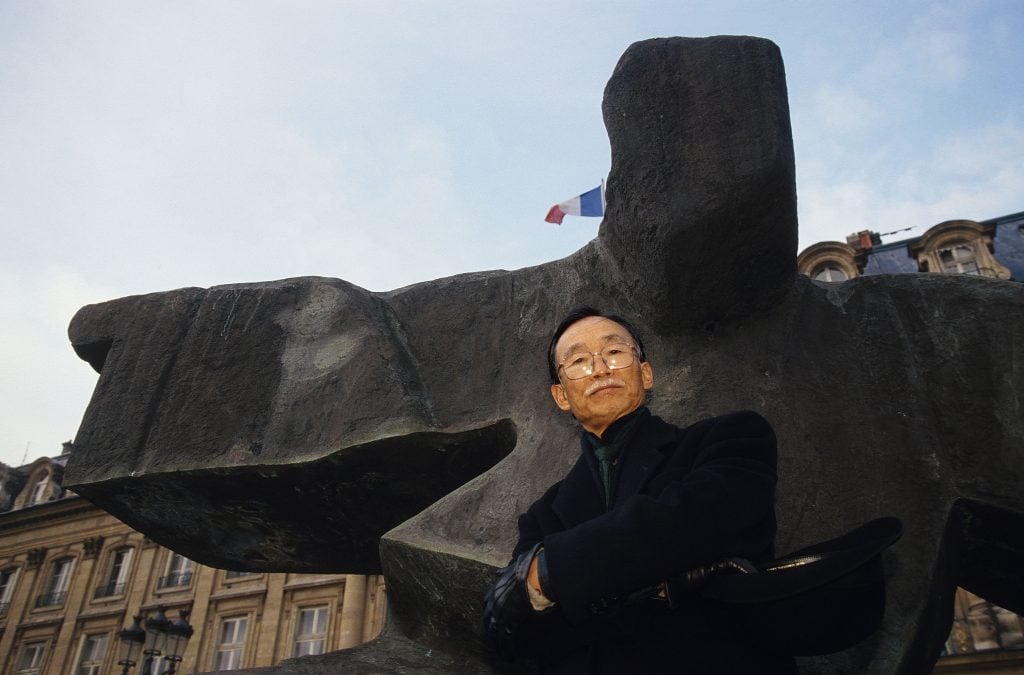
Is it possible to reintroduce the artist to the western audience despite his passing?

Vivienne Chow

Condolences poured in from the east Asian art world at the shocking news of the death of famed Taiwanese sculptor Ju Ming on April 22. Ju died at the age of 85 from suicide.
A household name in the Chinese-speaking world, particularly in his native Taiwan and Hong Kong, where his iconic sculptures have long been local landmarks, art world figures, celebrities, and the general public took to social media to pay tribute to the late artist whose work embodied the spirit of east Asian beauty and philosophy.
While reminiscing about Ju’s extraordinary journey from humble beginnings to artistic heights, some art market insiders questioned why the master sculptor was lesser known in the west despite being widely exhibited worldwide. Some wondered if it will be possible to reintroduce Ju to the global art stage, particularly in the west.
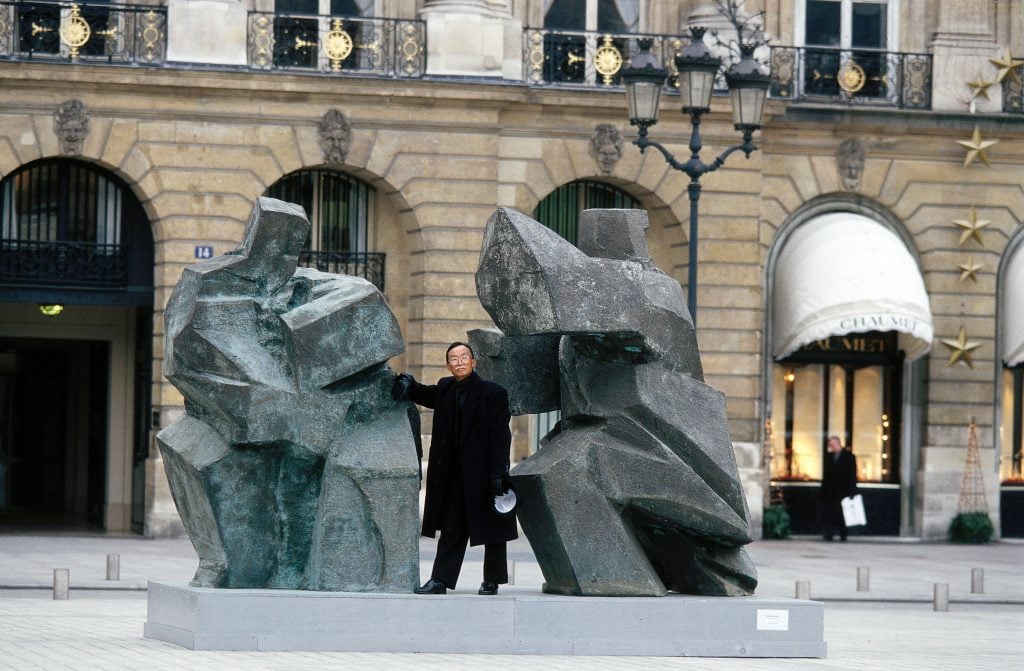
Ju Ming outside the Place Vendome in Paris, France during the exhibition “Sculptures of Ju Ming” in December 1997. Photo: Xavier Rossi / Gamma-Rapho via Getty Images.
“Ju Ming was a pioneer of contemporary art of the ethnic Chinese… [but] after 2014, Ju Ming ceased almost all of his international activities, vanishing from the global art scene,” wrote Katy Shiu-Chih Chien, an art entrepreneur and publisher of Taiwanese art magazine Artouch, in her tribute to the late artist, while urging his estate and supporters to consider bringing Ju’s art to the wider world.
Indeed, over the past decade, Ju went from being a widely exhibited Asian artist in the west to a name adored exclusively by Asian audiences or lovers of Asian culture.
“He was better known in the west in the late 1990s and early 2000s. The pieces of Ju Ming were visible in England, Paris, and Luxembourg,” London-based dealer and advisor Tanya Baxter told Artnet News. Baxter began working with Ju in the mid-1990s when she ran a gallery in Hong Kong before moving back to London, last showing the artist in London in 2001. But today, “there are not as many people asking [for Ju] as before.”
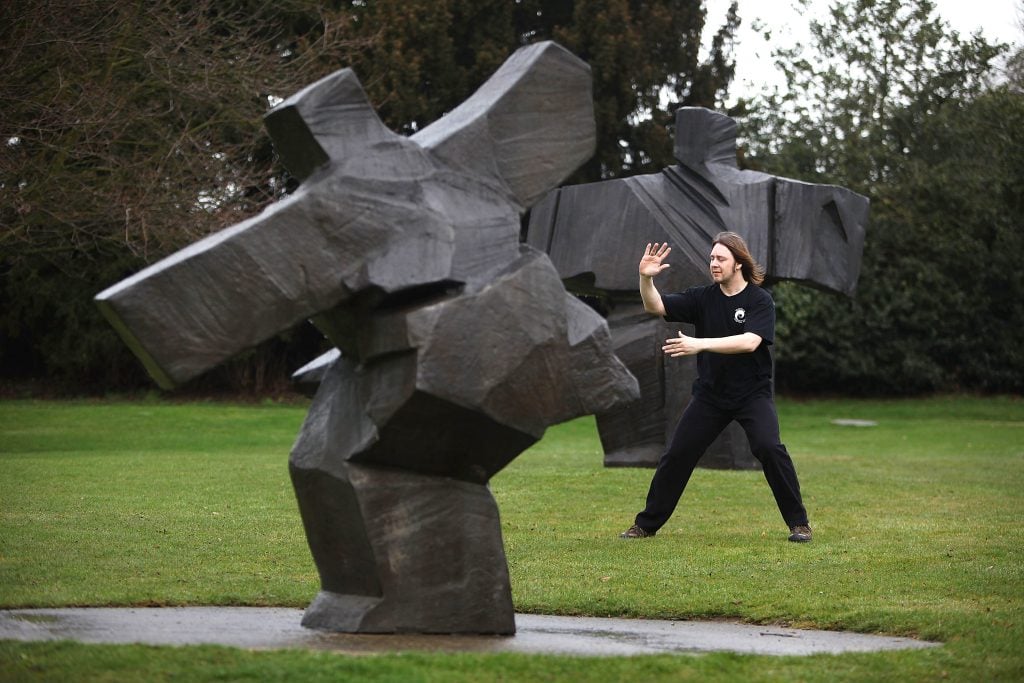
Tai chi expert Richard Morley practices the ancient martial art next to sculptures by Taiwaneses artist Ju Ming at Yorkshire Sculpture Park on March 25, 2010 in Wakefield, England. Photo: Christopher Furlong/Getty Images.
Born in Taiwan in 1938 when the island was still under Japanese colonial rule, Ju began his training as a woodcarver in 1953 when he was just 15 years old. Having won several local art awards, he became a student of renowned sculptor Yuyu Yang in 1968. Ju became well-known in Taiwan in the following decade, during which he developed his famed “Taichi” series, inspired by the Chinese martial arts practice that he took up under the advice of Yang. The “Taichi” series quickly became the artist’s most iconic creation. He also expanded his practice by exploring various materials from wood to bronze. Together with the “Living World” series, Ju firmly established himself as a renowned artist in his native Taiwan. In 1999, Ju Ming opened his museum on the island.
Ju held his first overseas exhibition at Japan’s Tokyo Central Art Museum in 1977, followed by a series of landmark institutional and gallery shows at venues such as Hong Kong Arts Centre in Hong Kong in 1980, the Max Hutchinson Gallery and Phyllis Kind Gallery in New York throughout the ’80s, and London’s South Bank Centre and Yorkshire Sculpture Park in the U.K. in 1991. Recalling the two landmark U.K. exhibitions, veteran Hong Kong gallerist and curator Johnson Chang noted that the shows created “an instant sensation,” and paved the way for him to further introduce the artist through exhibitions across Europe, including a 1997 show at Place Vendôme in Paris.
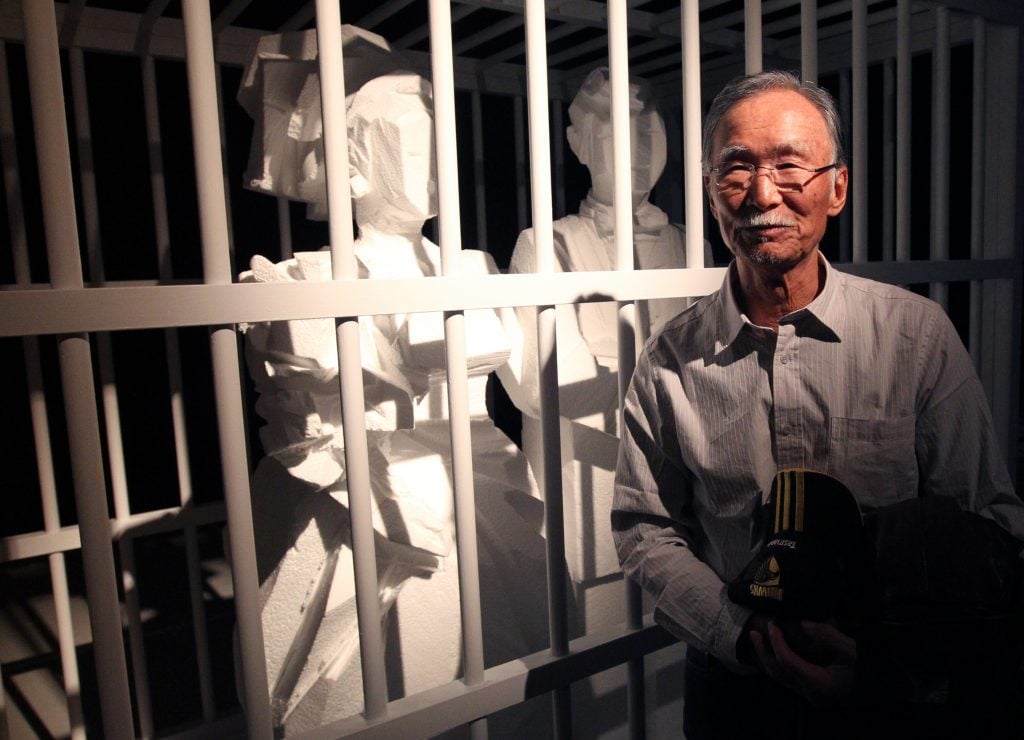
Taiwanese artist Ju Ming poses for a picture with his sculptures from the “Living World” series exhibited at Hong Kong Museum of Art in Tsim Sha Tsui, February 26, 2014. It was the artist’s last major exhibition outside of Taiwan. Photo: Edward Wong/South China Morning Post via Getty Images.
Simon Stock, Sotheby’s senior specialist in Impressionist and modern art, Europe and Asia, has brought Ju’s work to the European market, most notably in “Beyond Limits,” the house’s selling exhibition series of outdoor sculptures that he co-curated. Works from the “Taichi” series were featured in the shows that took place in Chatsworth, the country estate of the Duke and Duchess of Devonshire, in 2007, 2009, and 2016.
“His embrace of direct carving is something that is prized in the west as well as it is in Asia,” Stock told Artnet News, citing the wooden pieces from the “Taichi” series. He called Ju “a spectacular sculptor” who made work that bridges the gap between spaces of “the monumentality and stiffness of matter and material.”
But despite these well-received showcases, Stock agreed that Ju could’ve been better recognized in the west. “It’s a shame that we don’t find his work more broadly disseminated on the secondary market in sale rooms such as New York, Paris, and London.”
One reason, Stock pointed out, could be the lack of a large-scale, sustained push of the artist by a major international gallery over the past decade. Another reason could be related to the ongoing success of the artist’s work in Asia. A quick look at the Artnet Price Database reveals that almost all the top 100 auction sales records of Ju’s works happened either in Hong Kong or Taiwan. His auction record stands at $2.7 million for an edition of the iconic bronze sculpture Single Whip from the “Taichi” series, which sold at a 2010 Ravenel sale in Taipei.
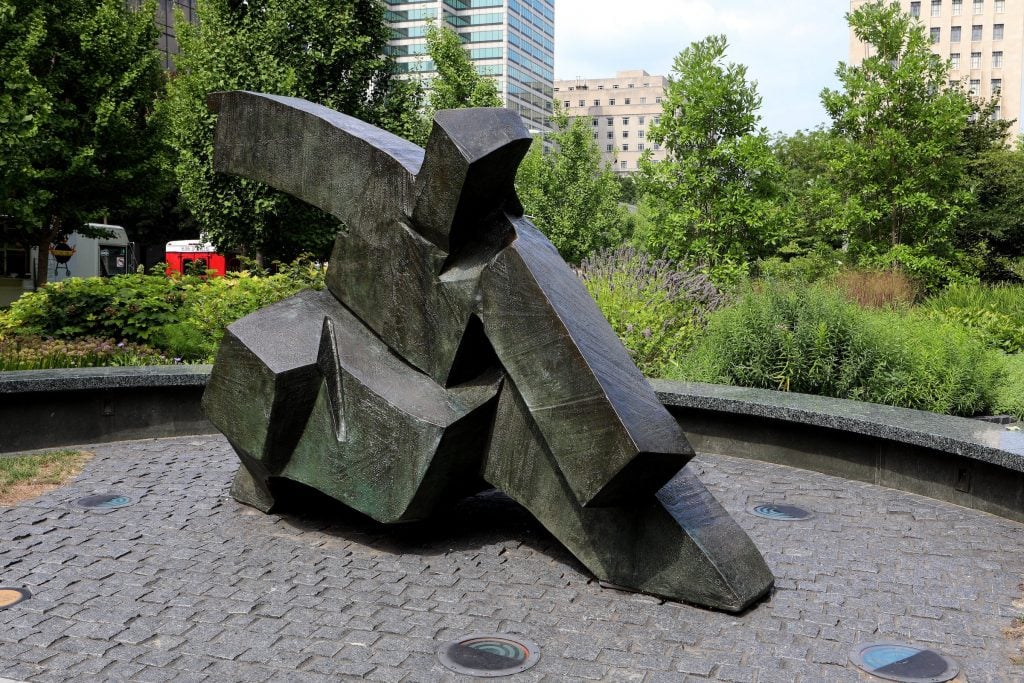
Ju Ming’s Single Whip sculpture from his “Tai Chi” series in Citygarden in St. Louis, Missouri, 2017. Photo: Raymond Boyd/Getty Images.
“It’s difficult to convince a consigner to sell in the west when there’s a demonstrated success rate in Asia,” Stock noted. “But then, it doesn’t mean that [sales in Asia] exclusively sell to Asian buyers.”
Ada Tsui, Christie’s specialist and head of day sale, 20th/21st century art, based in Hong Kong, confirmed to Artnet News that the prices for Ju’s sculptures have been stable over the past decade. They have also been regular fixtures in the house’s sale every season, including three works to be offered at the upcoming Hong Kong spring sales towards the end of May.
“From our data in 2020 through April 2023, around 90 percent of the buyers for his works are from Asia; the rest were from the U.S. and the U.K.,” Tsui noted, adding that some of the consignors are based in the west.
More collectors from Asia and the west might want to “own a piece of his legacy” following the artist’s tragic death, Tsui noted. But bringing Ju back to the global art discourse will take more than just sales.
Dealer Baxter said that due to the logistics challenges for heavy sculptures, arranging an exhibition and finding the right platform to present Ju’s work will take time. Chien, on the other hand, urged the artist’s estate to strengthen and improve the authentication of Ju’s work. The current process of authentication of Ju’s work has made it difficult for the works to be exchanged on the secondary market, according to a market insider who asked to remain anonymous.
“International gallery shows and other prominent sort of retrospective exhibitions sales could help. Perhaps several galleries have sought out and explored that option, but there could be complications that we are not aware of,” the market insider told Artnet News.
“Now that the artist has sadly died, one hopes that the estate has put good, experienced people in positions to look after his legacy and carry that forward,” noted Stock.